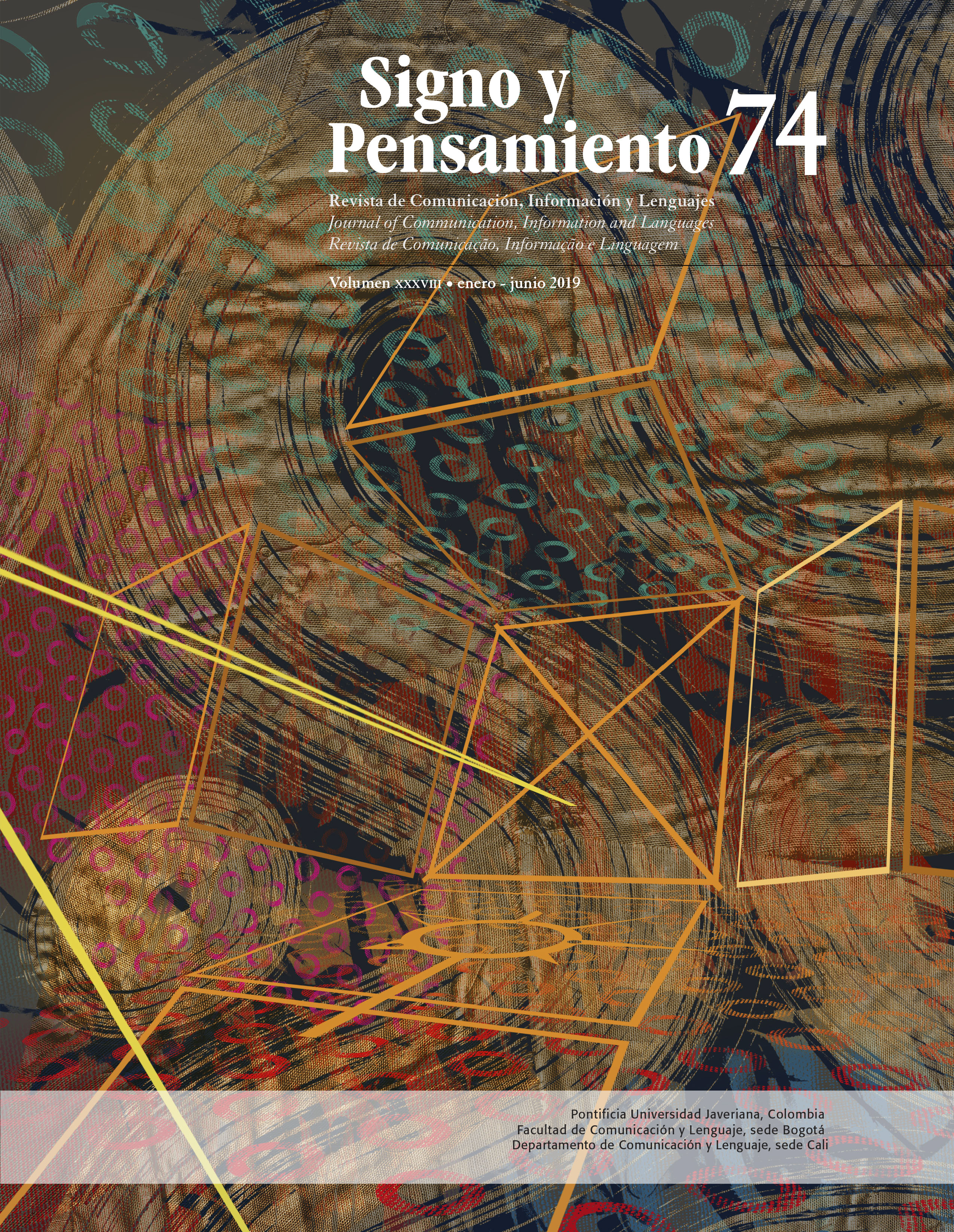Abstract
Articulating, on one hand, some recent studies on popular music from different Latin-American countries and, on the other hand, some searches in publications like song books, and gossip magazines, a research is conducted about the mobility of popular musics through different countries in the region. It identifies the increase, presence and dialogue of the travelling musics with those deemed as national musics during the 1930s. In this decade, the cultural industry of the radio, records and cinema consolidated under an intermedial process as the entertainment and broadcasting spaces that, excluding the cinema, transcend the public spaces to settle into the private spheres.
Azula, M., Rodríguez, M., & León, L. (2011). Canción andina colombiana en duetos. Transcripción y aproximación documental. Bogotá: Universidad de los Andes.
Anderson, B. (1993). Comunidades imaginadas. México D. F.: Fondo de Cultura Económica.
Buitrago-Trujillo, H. A. (2018). Un pandemónium de ridículas estridencias. Prácticas musicales y representaciones sociales durante La Violencia en los Llanos orientales y Tolima (tesis doctoral). Universidad Nacional de Colombia, Medellín, Colombia.
Cortés-Polanía, J. (2004). La música nacional popular colombiana en la colección Mundo al día (1924-1938). Bogotá: Universidad Nacional de Colombia.
Follari, R. (2002). Identidad cultural e intervención técnica. Temas y problemas de comunicación, 10(12), 91-100.
García-Canclini, N. (1990). Culturas híbridas. Estrategias para entrar y salir de la modernidad. México D. F.: Grijalbo.
--------. (2007). Lectores, espectadores, internautas. Barcelona: Gedisa.
Garramuño, F. (2007). Modernidades primitivas. Tango, samba y nación. Buenos Aires: Fondo de Cultura Económica.
González, J. (2013). Pensar la música desde América Latina. Buenos Aires: Gourmet musical.
Hobsbawn, E. & Ranger, T. (Eds.). (1983). La invención de la tradición. Barcelona: Crítica.
Martín-Barbero, J. (1991). De los medios a las mediaciones. México D. F.: Gustavo Gili.
Mato, D. (2001). Producción transnacional de representaciones sociales y transformaciones sociales en tiempos de globalización. En D. Mato (Comp.), Estudios Latinoamericanos sobre cultura y transformaciones sociales en tiempos de globalización (pp. 13-29). Buenos Aires, Argentina: CLACSO.
Ochoa-Gautier, A. M. (2006). El sonido y el largo siglo XX. Número, (51), 1-9.
Pérez-González, J. (2010). Las historias de la música en Hispanoamérica (1876-2000). Bogotá: Universidad Nacional de Colombia.
Puerta-Domínguez, S. (2015). Cine y nación. Negociación, construcción y representación identitaria en Colombia. Medellín: Universidad de Antioquia.
Pujol, S. (2012). Cien años de música argentina desde 1910 a nuestros días. Buenos Aires: Biblos-Fundación OSDE.
Rendón-Marín, H. (2009). De liras a cuerdas. Una historia social de la música a través de las estudiantinas, Medellín, 1940-1980. Medellín: Universidad Nacional de Colombia-Sede Medellín.
Santamaría-Delgado, C. (2014). Vitrolas, rocolas y radioteatros. Hábitos de escucha de la música popular en Medellín 1930-1950. Bogotá: Pontificia Universidad Javeriana/Banco de la República.
Tello, A. (Coord.). (2010). La música en México. Panorama del siglo XX. México D. F.: Fondo de Cultura Económica/Conaculta.
This journal is registered under a Creative Commons Attribution 4.0 International Public License. Thus, this work may be reproduced, distributed, and publicly shared in digital format, as long as the names of the authors and Pontificia Universidad Javeriana are acknowledged. Others are allowed to quote, adapt, transform, auto-archive, republish, and create based on this material, for any purpose (even commercial ones), provided the authorship is duly acknowledged, a link to the original work is provided, and it is specified if changes have been made. Pontificia Universidad Javeriana does not hold the rights of published works and the authors are solely responsible for the contents of their works; they keep the moral, intellectual, privacy, and publicity rights.
Approving the intervention of the work (review, copy-editing, translation, layout) and the following outreach, are granted through an use license and not through an assignment of rights. This means the journal and Pontificia Universidad Javeriana cannot be held responsible for any ethical malpractice by the authors. As a consequence of the protection granted by the use license, the journal is not required to publish recantations or modify information already published, unless the errata stems from the editorial management process. Publishing contents in this journal does not generate royalties for contributors.



